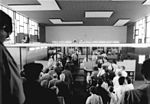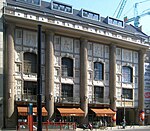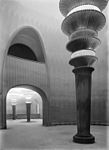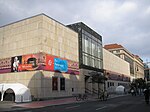Trains to Life – Trains to Death

Trains to Life – Trains to Death is a 2.25 meter outdoor bronze sculpture by architect and sculptor Frank Meisler, installed outside the Friedrichstraße station at the intersection of Georgenstraße and Friedrichstraße, in Berlin, Germany. It is the second in a series of so far five installations also on display near train stations in London, Hamburg, Gdańsk and Hook of Holland.The sculpture depicts two groups of children. One group is a pair of children symbolizing those saved by the Kindertransport, which brought 10,000 Jewish children from soon-to-be Nazi-occupied countries in Eastern Europe to safety in the United Kingdom and other countries. The other group consists of five children, who represent the 1,600,000 Jewish and non-Jewish children brought by Holocaust trains to the concentration camps and later killed there. Meisler himself was among those saved by the Kindertransport.
Excerpt from the Wikipedia article Trains to Life – Trains to Death (License: CC BY-SA 3.0, Authors, Images).Trains to Life – Trains to Death
Georgenstraße, Berlin Mitte
Geographical coordinates (GPS) Address Nearby Places Show on map
Geographical coordinates (GPS)
| Latitude | Longitude |
|---|---|
| N 52.51986 ° | E 13.38773 ° |
Address
Denkmal zur Erinnerung an Kindertransporte
Georgenstraße
10117 Berlin, Mitte
Germany
Open on Google Maps











